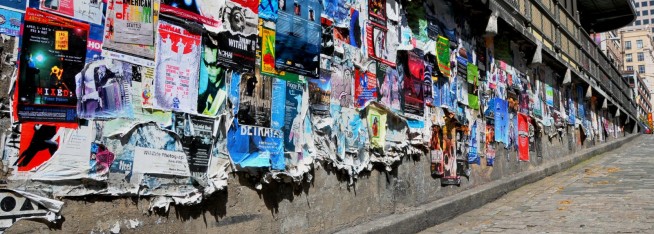Uniqlo recently launched a campaign where they got a bunch of people to simultaneously pin photos to pinterest to create a page takeover effect. Visually it’s a well designed piece that’s colourful and communicates their new dry mesh t-shirts well. However this campaign completely misses the mark as a piece of digital communication, and here is why.
Why it’s wrong
Acts a stiff billboard
The main reason this fails is because it uses digital as a billboard. The computer screen is not another stagnant media space, it’s an interactive media space where the functionalities should be used advantageously. Trying to re-create a print experience on the digital screen is missing the digital opportunity. It’s not about the space you can take out on the screen, it’s about the interactive experience you can offer the customer.
The opportunity missing – it’s a social network not a print publication
This opportunity is particularly lost on a social network. Here you have a network that is designed to amplify advocation and Uniqlo decided to simplyplaster the site with a huge takeover. Wouldn’t you rather come up with a strategy to increase digital word of mouth and amplify advocation across many screens and platforms, rather than take over one screen for only a handful of consumers in a one off impression?
Disruptive = annoying
Let’s say you’re on Pintrest looking for cool photos that are aligned to your interests and all of a sudden you see a huge take over that takes ages to scroll out of. This disruptive behaviour is simply annoying and turns consumers off the brand. Brands need to work out ways to sync in with a consumers online exploration rather than interrupt it.
It’s still just an ad
This interruption leads me to my next point, this is still just an ad, and ads are soooooo 2003. When working in digital, particularly on social platforms, brand can simply no longer create ‘ads’.They have to create engagement and experiences, anything else just gets in the way of the consumers activity and will immediately create a barrier to purchase. We have grown up in an ad-filled world and psychologically we are prepared to block out anything we can recognise in an advertising-form. The challenge for marketers is to create experiences in the grey zone between of entertainment, engagement and in-situ interactivity.













